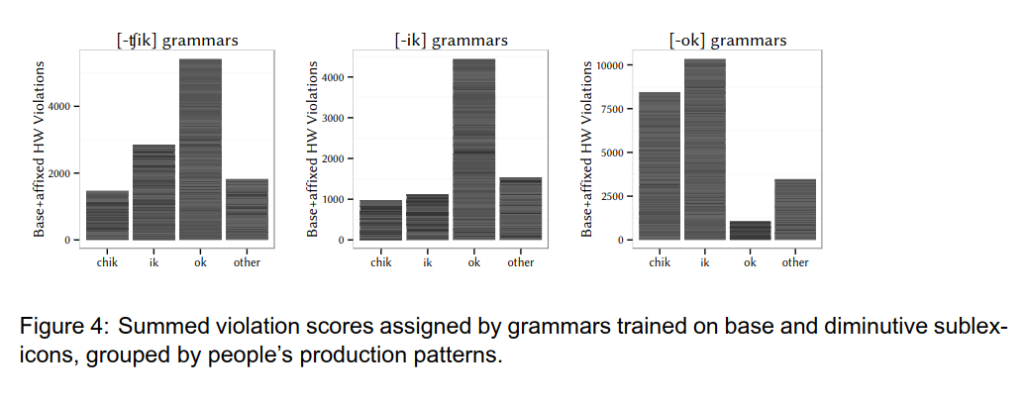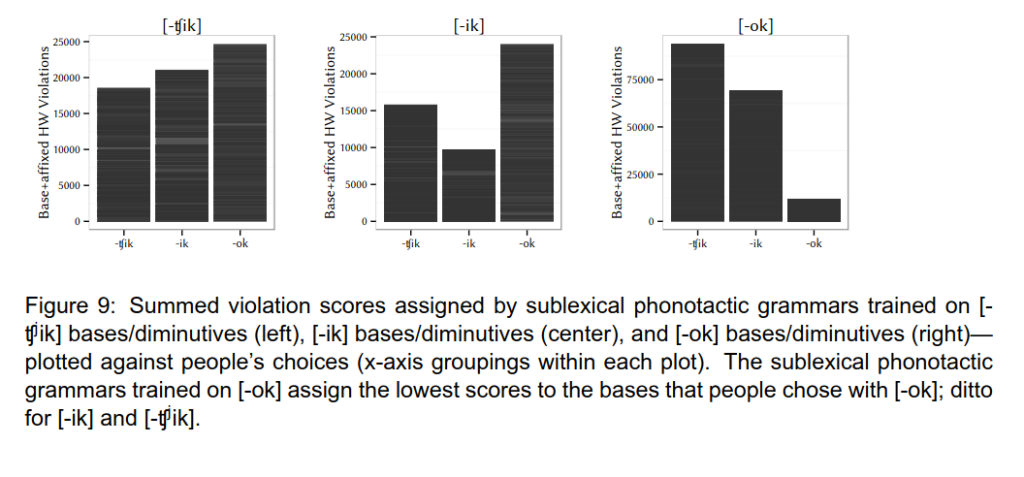Gouskova, Maria, Luiza Newlin-Łukowicz, and Sofya Kasyanenko. 2015. Selectional restrictions as phonotactics over sublexicons. Lingua 167, pp. 41-81.
Affixation and allomorphy are often phonologically predictable: thus, the English indefinite “a” appears before consonants, and “an” before vowels. We propose a theory of phonological selection that separates rules of morpheme realization from phonological knowledge about the bases and the derived words. This phonological knowledge is encoded in miniature phonotactic grammars, which are learned over sublexicons defined by morphological generalizations. Each sublexical phonotactic grammar determines the likelihood that a new word will follow the associated rule. We examine a complex case of suppletive allomorphy in Russian, whose diminutive suffixes define sublexicons differing in constraints on final consonant place and manner, presence and location of consonant clusters, vowel hiatus, and stress. In elicitation, Russians choose allomorphs for words without diminutives based on how these words and the derived diminutives fare in the sublexical phonotactic grammars. In a nonce word study, Russians also chose allomorphs based on sublexical phonotactic well-formedness, even when the phonotactic violations were non-local to the affix itself. These patterns are missed by alternative approaches such as emergence of the unmarked, insertion rules that refer directly to phonological information, and the Minimal Generalization Learner.
Supplemental materials:
my NYU Faculty Digital Archive page for the project–individual files can be accessed there or by clicking on the links below.
PDF of appendix with experimental stimuli
Audio files of production study, zip file (649 MB).
Audio stimuli for rating study, zip
CSV of the results of rating study
Some people’s PDF readers refuse to display Figures 4 and 9:

